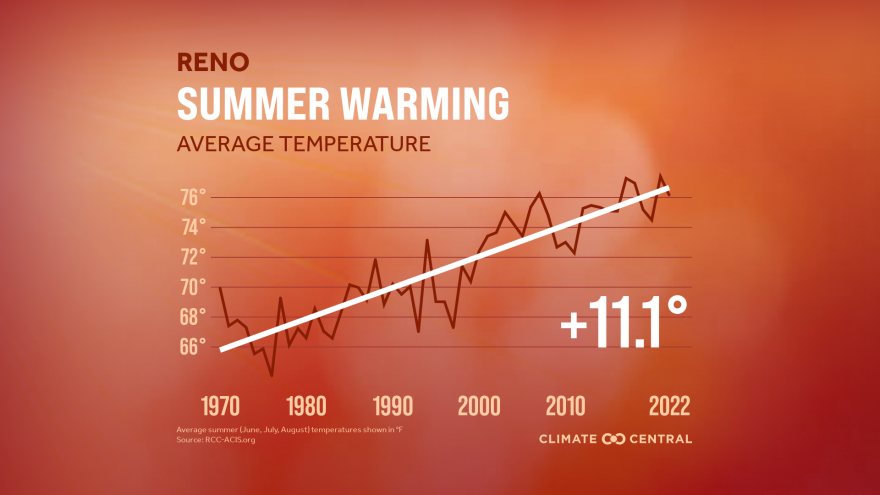Over the last half century, summers have gotten progressively hotter in the U.S., especially in the West, according to a new analysis.
The group Climate Central temperature data from nearly 250 locations from 1970 through 2022. The analysis found an average jump of 2.4 degrees Fahrenheit nationwide, but in the West those increases were particularly pronounced.
Reno, Nev., saw average summer temperatures soar by more than 11 degrees, the biggest increase in the country. Boise, Idaho's 5.8-degree spike ranked No. 2, followed by Las Vegas (5.8 degrees) and Salt Lake City (5.5 degrees).

While human-caused climate change is a key factor behind the trend, Jennifer Vanos, an associate professor at Arizona State University’s School of Sustainability, said the way cities are built also plays a major role, resulting in what's known as the .
For many, Vanos said, city heat is mostly an inconvenience, easily endured with air conditioning—but not all have that luxury.
“For a proportion of the population, heat is an absolute disaster and can cause death,” she said. “It's really hard for people in that first group, where heat's an inconvenience, to understand the group where heat's a disaster – where someone can't afford their air conditioning bill or can't buy an air conditioner or works outdoors and goes to a home where they only have a swamp cooler, or they’re unhoused and do not have a place to shelter.”
In Maricopa County, home to ASU, there were last year.
Apart from taking steps to address climate change, Vanos said that a lot can be done to protect people from the heat, like opening cooling centers, planting trees, and ensuring there are sufficient places for people to go if major blackouts shut down air conditioning units across cities.
The U.S. Environmental Protection Agency also recommends other to address urban heat, like the installation of so-called cool or green roofs as well as cool pavement, which absorbs less energy from the sun.
Find out more about what's happening temperature-wise in different parts of the U.S. .
This story was produced by the Mountain West ���ڱ��� Bureau, a collaboration between Wyoming Public Media, Nevada Public Radio, Boise State Public Radio in Idaho, KUNR in Nevada, the O'Connor Center for the Rocky Mountain West in Montana, KUNC in Colorado, KUNM in New Mexico, with support from affiliate stations across the region. Funding for the Mountain West ���ڱ��� Bureau is provided in part by the .
Copyright 2023 Boise State Public Radio ���ڱ���. To see more, visit .






